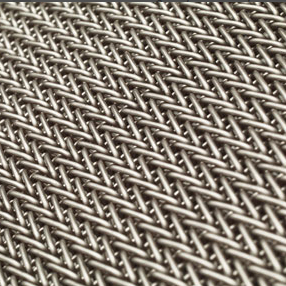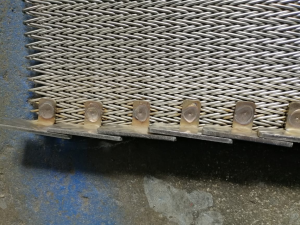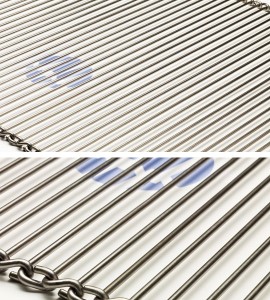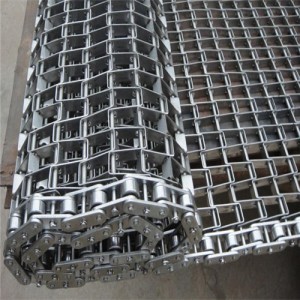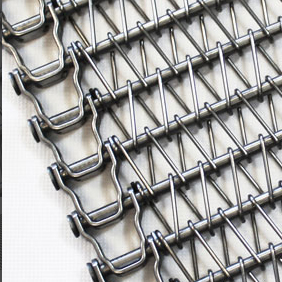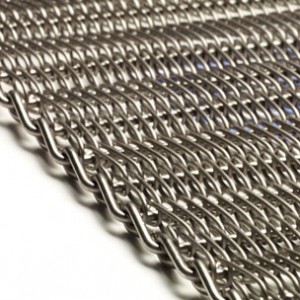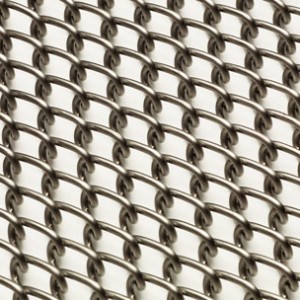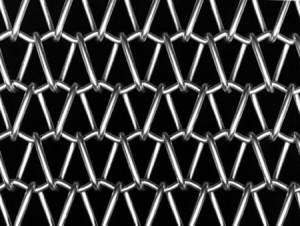Also known as 'Compound Balanced' belting
Wire Belt Company’s Cordweave belts offer an extremely close and flat mesh for applications where very small items are being conveyed. Cordweave also provides a uniform heat transfer across the belt due to its high density and smooth carrying surface. These characteristics make Cordweave a popular choice in a wide variety of applications, ranging from biscuit baking to sorting small mechanical components.
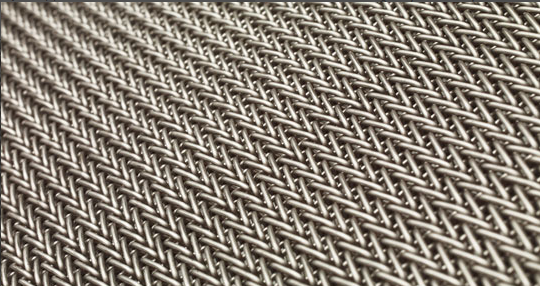
Also known within the industry as “Compound Balanced (CB)” belting, Cordweave belt is essentially a Balanced Spiral belt which has multiple spirals and cross rods per pitch, effectively creating a “belt within a belt”. This compound structure closes up the apertures within the belt, giving Cordweave its characteristic high density and flat surface.
By offering a flat carrying surface with little open area, Cordweave is a popular choice for applications as diverse as bottle-annealing to baking small snack products. Cordweave is particularly popular in baking applications as its high density construction ensures a uniform heat transfer through to the product.
Cordweave is commonly supplied in Grade 304 Stainless Steel and high carbon steel; however other materials are available upon request. Drive is applied by use of friction rollers, with chain edge variants being available by special request. For applications requiring product elevation or separation, Cordweave can also be supplied with cross flights and side plates specific to your requirements.
Other Specialised Belt Style Applications
- Rice Handling
- Swarf Conveyors
- Heat Treating of Small Fasteners
- Furnace Curtain
- Sintering of Powdered Metal Components
- Electro-Plating
- Accumulation Tables
- Seed Drying
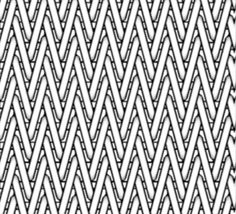
Standard Cordweave (CORD)
The standard assembly consists of alternating left and right hand coils with each coil interconnecting with the next by means of a number of cross wires through each coil. The introduction of added cross wires through each coil allows for the close meshing of adjacent coils in both the width and length. With loose assembly Cordweave belts it may be necessary to supply the cross wires with a crimped form (as per Balanced Spiral weave belts) to ensure nesting of the coil wires. In this format both coil and cross wires are of round section.
For method of belt code identification
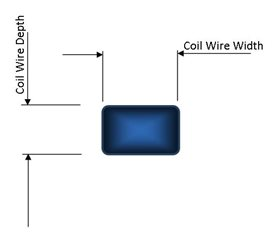
Flat Wire Coil alternatives
The mesh specifications are also available with coil wires manufactured using a flattened wire. These styles are most useful to gain more surface area when handling small base area products. When identifying the coil wire it is important to confirm the cross section dimensions.
Edge Availability
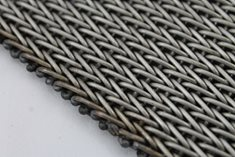
Welded Edge
Due to the close meshing of both the crimp and cross wire, welded is the standard available type of edge finish.
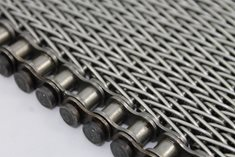
Chain Edge Driven Specialty Mesh
This style of belt incorporates the basic mesh above but is specially fitted with chain edges to ensure positive drive and tracking. With this assembly the edge chain is the drive medium with the mesh being pulled through the circuit. It is limited to small range of mesh options and in most cases incorporates extend coils at the cross rod join position. Due to its method of assembly this belt is less economic than the plain friction driven style.
Methods of Drive
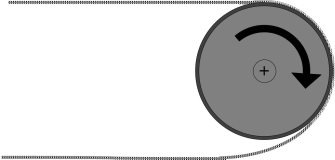
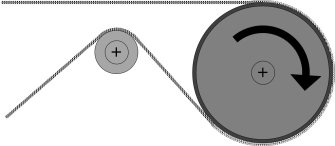
Friction Driven
Friction Drive Simple Circuit
The most common form of drive is the plain steel parallel driven roller system. This system depends on the frictional contact between the belt and roller to ensure drive of the belt.
Variations of this drive type include the lagging of the roller with such materials as rubber, friction brake lining (for high temperature), etc. The use of such friction lagging materials allow for the operational drive tension in the belt to be reduced, thus increasing the useful life of the belt.
Friction Drive Snub Pulley Circuit
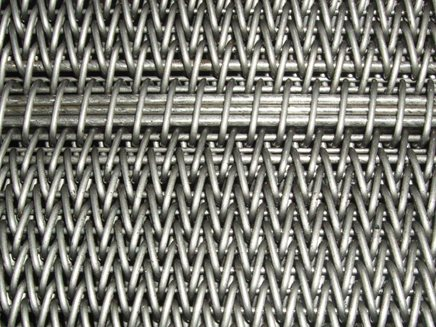
Special Chain Edge Drive
This method uses the specialty chain edge driven mesh with the chains being driven by chain sprockets located on the drive and idle shafts to align with these chains. Special elongated coils may be required at the cross rod positions with the possible addition of filler wires should the product be small – see picture below.
Available Specifications
The table below is an extract of available meshes and shows the more common specifications:
|
Specification Code. |
Coil Pitch Across Width |
Coil Wire Dia. |
Cross Wire Pitch Down Length |
Cross Wire Dia. |
Number of Cross Wires per Coil. |
|
CORD3 |
5.08 |
1.22 |
3.05 |
1.22 |
3 |
|
CORD4 |
11.29 |
2.03 |
4.35 |
2.03 |
4 |
|
CORD4 |
10.16 |
2.03 |
5.08 |
2.64 |
4 |
|
CORD4 |
4.24 |
0.91 |
2.24 |
1.22 |
4 |
|
CORD4 |
8.47 |
1.63 |
3.63 |
1.63 |
4 |
|
CORD4 |
6.35 |
1.22 |
2.82 |
1.22 |
4 |
|
CORD5 |
8.71 |
1.6 x 1.3* |
3.39 |
1.63 |
5 |
All dimensions in millimetres (mm).
*Nominal size.
More specifications are available. Please contact our Technical Sales Engineers for more information.
Other Specialised Belt Style Applications
- Rice Handling
- Swarf Conveyors
- Heat Treating of Small Fasteners
- Furnace Curtain
- Sintering of Powdered Metal Components
- Electro-Plating
- Accumulation Tables
- Seed Drying
Standard Material Availability (Mesh Only)
|
Material |
Maximum Wire Operating Temperature °C |
|
Carbon Steel (40/45) |
550 |
|
Galvanised Mild Steel |
400 |
|
Chrome Molybdenum (3% Chrome) |
700 |
|
304 Stainless Steel (1.4301) |
750 |
|
321 Stainless Steel (1.4541) |
750 |
|
316 Stainless Steel (1.4401) |
800 |
|
316L Stainless Steel (1.4404) |
800 |
|
314 Stainless Steel (1.4841) |
1120 (Avoid use at 800-900°C) |
|
37/18 Nickel Chrome (1.4864) |
1120 |
|
80/20 Nickel Chrome (2.4869) |
1150 |
|
Inconel 600 (2.4816) |
1150 |
|
Inconel 601 (2.4851) |
1150 |
Before making a selection for high temperature applications consult with our Technical Sales Engineers for the most suitable wire grade for the application as wire strength reduces at elevated temperatures.
